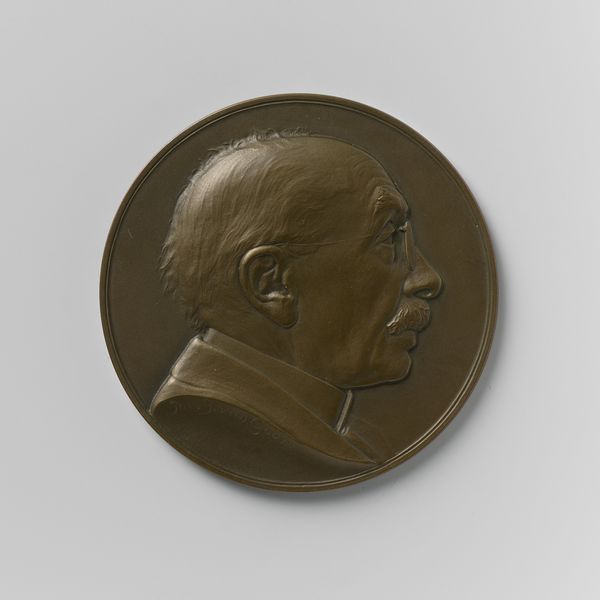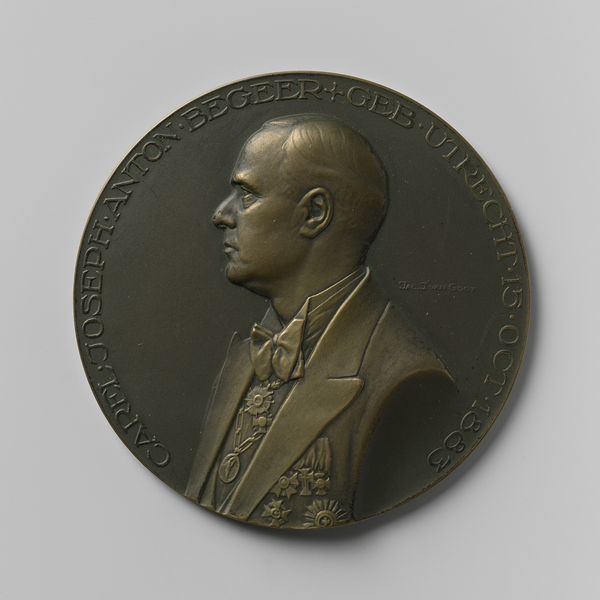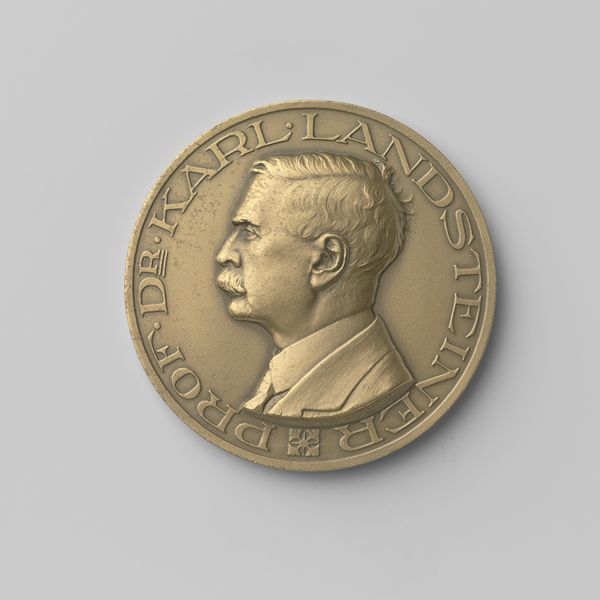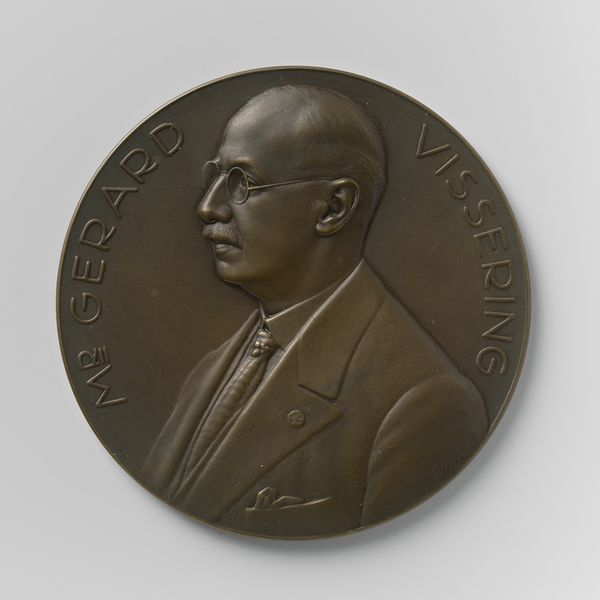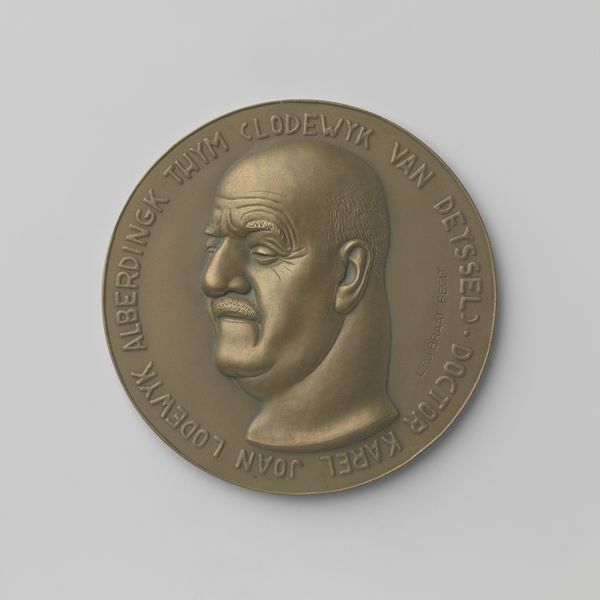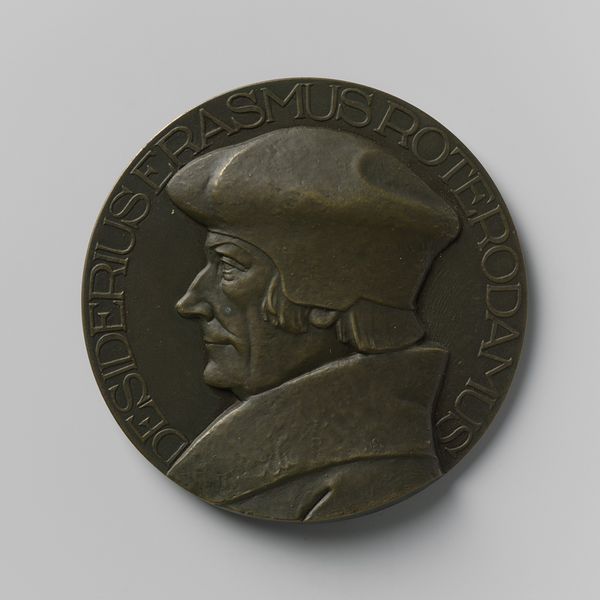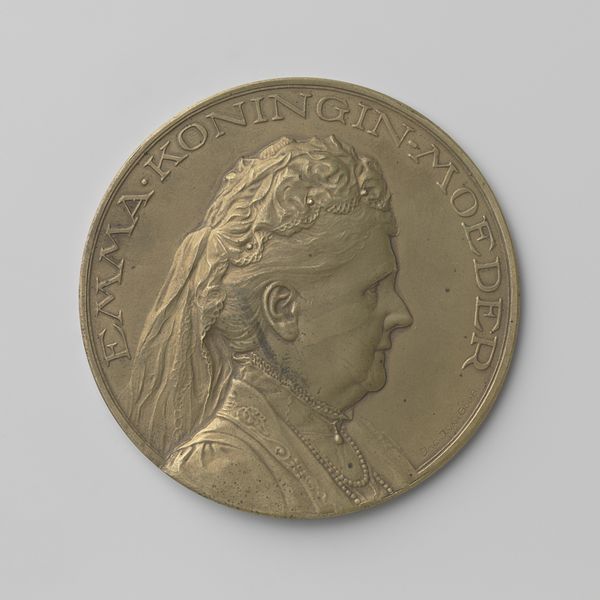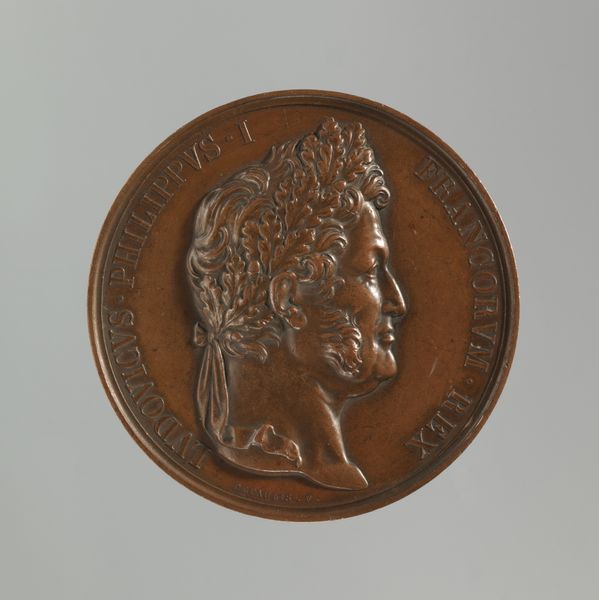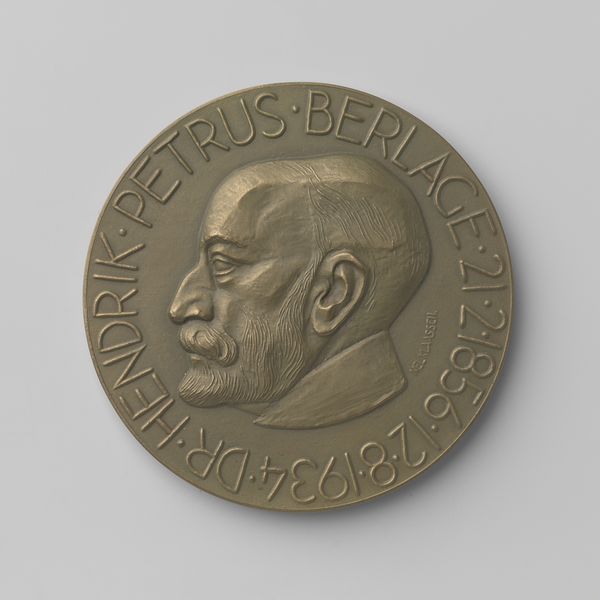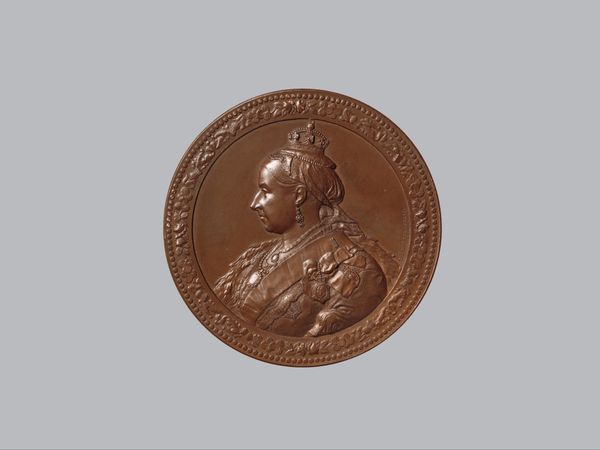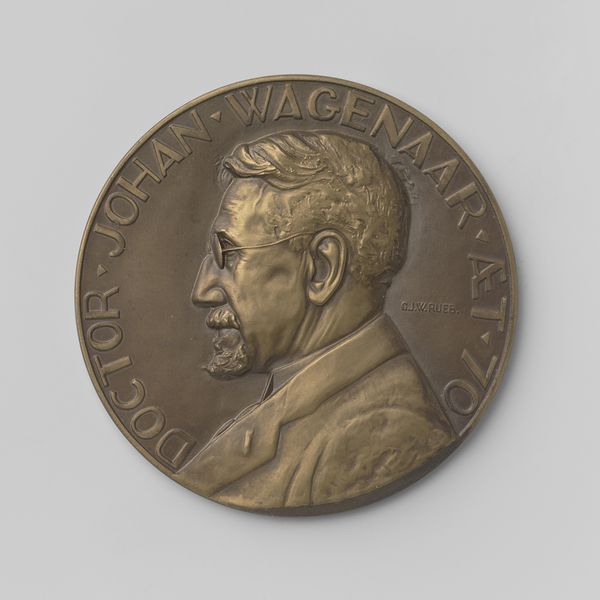
Overlijden van Generaal Spoor en hulde aan de Nederlandse soldaten in Indonesië 1949 1949
0:00
0:00
relief, bronze, sculpture
#
portrait
#
relief
#
bronze
#
sculpture
#
history-painting
Dimensions: diameter 6.0 cm, weight 75.89 gr
Copyright: Rijks Museum: Open Domain
Curator: Here we have a bronze relief sculpture titled "Overlijden van Generaal Spoor en hulde aan de Nederlandse soldaten in Indonesië 1949," dating back to, well, 1949, by Geurt Brinkgreve. What strikes you initially about it? Editor: Immediately, a feeling of somber dignity. The low relief lends it a muted gravity, while the bronze lends it a timeless solemnity, doesn’t it? I also think it has an obvious propagandistic purpose as well. Curator: Yes, that timelessness is part of its purpose as a commemorative object. It employs the visual language of classical portraiture for a modern military figure, embedding Spoor within a lineage of leadership. Do you see other visual echoes of the past? Editor: The circular format calls to mind ancient Roman coins or medals. Presenting him in profile further classicalizes Spoor. This artistic decision obviously aims to create an enduring, even heroic image. It is important, though, to confront what it obscures. It's hard to divorce it from the realities of the Indonesian National Revolution and Dutch colonial violence. Curator: Exactly. Symbols do shift, as you well know, even reversing their meaning over time! It represents not just a man, but also ideas about duty, sacrifice, and nation. These themes were undeniably potent in the aftermath of the Second World War and the decolonization struggles, like that in Indonesia. This object definitely freezes one specific moment and worldview into metal. It's not neutral at all, obviously, right? Editor: Not in the least. To me, viewing this relief now requires confronting the uncomfortable truth. Recognizing it as a piece of cultural heritage, but also acknowledging the way it actively glorifies the Dutch involvement in a conflict that caused great suffering and oppression. And in this regard it acts like all history-paintings do. Curator: Precisely. Looking at the clean lines of his profile, and the rigid, unwavering gaze depicted, one sees the desire to portray an ideal of unwavering leadership. Editor: Seeing those qualities and recognizing the reality allows us to not only see history in this single commemorative portrait but in some ways to critique it and reassess that past using the same tool in a different manner, isn't it? Curator: Absolutely, reclaiming that tool with a new context is a critical part of cultural discourse. Editor: It invites contemplation.
Comments
No comments
Be the first to comment and join the conversation on the ultimate creative platform.

